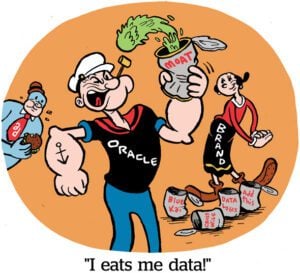Ad tech M&A has had a case of the Mondays since … late 2021.
After the blistering pace of M&A during the height of the pandemic, deal activity in the ad tech sector slowed to a trickle in 2022 and has remained sluggish this year.
According to LUMA’s most recent market report, released last week, ad tech deal volume was down 35% in Q2 compared with the previous quarter.
This past quarter was also notable for another reason, however: MediaMath filed for Chapter 11 bankruptcy protection on June 30, the last day of Q2.
Though LUMA doesn’t see MediaMath’s demise as a “canary in the coal mine” for dealmaking during the rest of this year and into 2024, said Conor McKenna, a partner at LUMA.
As “unfortunate as it is,” McKenna said, “MediaMath isn’t necessarily reflective of a broader trend in the industry, but more so of what happens when a company has a tough capital structure and growing debt.”
Profitability vs. growth
What is reflective of a broader trend, he said, is the strange confluence of a relatively strong public market for tech stocks and a stagnant M&A environment.
Typically, when stocks are doing well, companies use their financial leverage to do deals. But the recent macroeconomic situation has been anything but typical.
The threat of an impending recession and rising interest rates forced tech companies in general – and ad tech vendors in particular – to reevaluate their priorities, McKenna said. These vendors spent the past two years reorienting their business to focus more on operational efficiency and sustainable growth rather than a growth-at-all-costs mentality, he added.
In some cases, that meant layoffs. Yahoo recently laid off more than 1,000 people from its ad tech group after shutting down its SSP and native ad network. Criteo has also made cuts this year, as has TripleLift.
Now, as recession fears start to move into the rearview and interest rates come back down, ad tech companies are more stable and in a position to start having the sort of initial conversations that could lead to consolidation within the next year.
“These are more mature businesses now,” McKenna said. “They have cash in the balance sheet and a public market that’s starting to support them more, which is an opportunity for M&A, especially as companies react to big tailwind opportunities like AI, data, CTV and commerce media.”
Scene setting
It’s not surprising to hear an investment banker talk about tailwinds and predict M&A to come. But the scene does seem set for some action.
Consumer spending is stabilizing, brands have pent-up budgets to spend in Q4 and new sectors, including retail, are embracing advertising.
“For what you might call ‘ad tech tourists,’ the sheen is off in terms of how exciting they think the sector is, but we always have peaks and troughs of general interest – that’s not new,” McKenna said. “What is new is the increase in companies focused on creating advertising businesses and using data.”
Everything is an ad network, etcetera.
And “the more people we have creating better mousetraps,” McKenna said, “the more others will want to acquire them.”
“Will it be everyone? No,” he continued. “But we are likely going to see deals coming from companies that are on a stronger footing now and in position to make those types of plays.”












